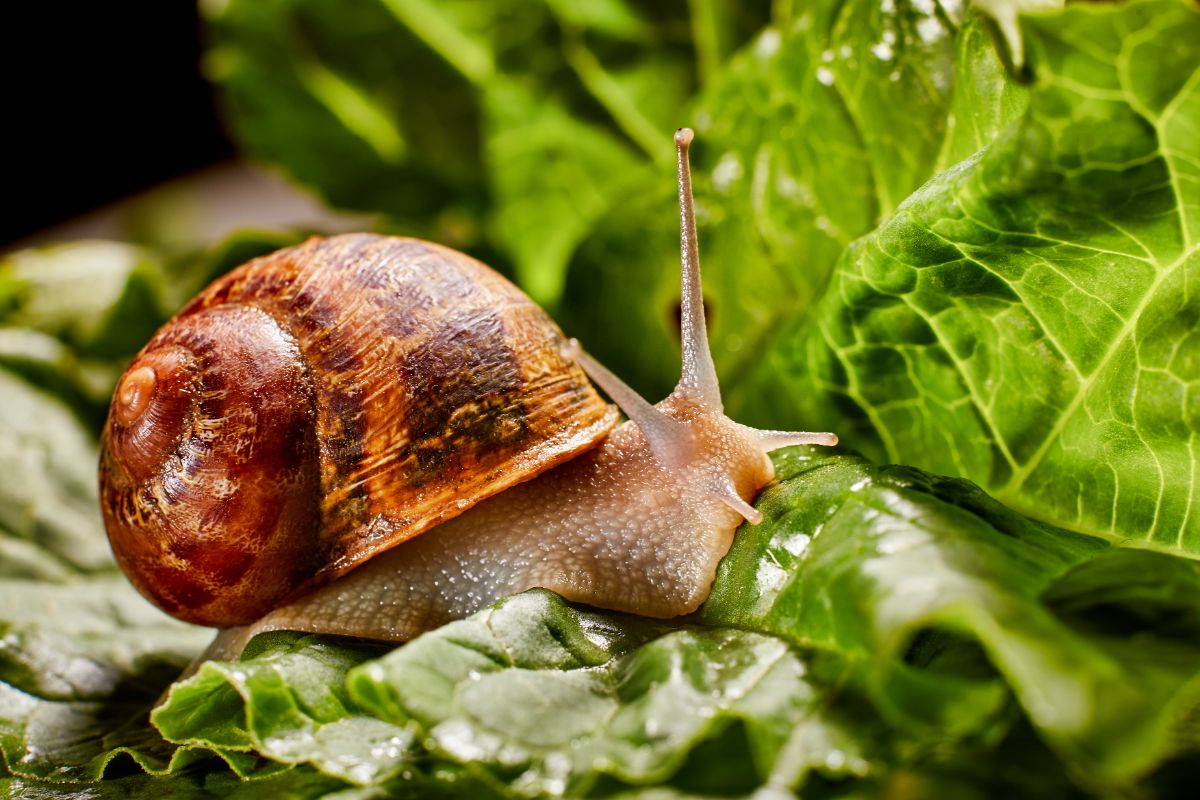
Whether you’re a beginning gardener with a few potted plants or a seasoned pro with a huge backyard garden, there’s no doubt about it: sooner or later you’ll encounter slugs and snails in your garden.
Voracious eaters, slugs and snails are some of the most common garden pests and are found the world over. Willing to eat just about any garden produce, from plump and juicy strawberries to crisp heads of cabbage, slugs and snails work quickly and can cause a huge amount of damage to your produce in a very short amount of time.
But, frustrating as these little eating-machines can be, there is hope. Today, there are so many methods and products to keep slugs and snails in check that there is certain to be a solution that will work just right for you and your garden. What’s more, many of these methods are safe for pollinators, household pets and you too!
Below, we’ve compiled our favorite organic tips and tricks to naturally control slugs and snails in your backyard. Follow along to learn the best ways to keep your garden produce and ornamental flowers slug-free without needing to resort to any nasty chemicals or pesticides.
Jump to:
- The basics on slugs and snails
- Signs of slug and snail damage
- The problem with traditional slug control methods
- A note on salt and vinegar
- Organic control methods to use in your garden
- Handpicking
- Slug pubs
- Premade slug traps
- Simple, DIY slug traps
- Diatomaceous earth
- Other barrier powders
- Electric barriers
- Copper tape
- Nematodes
- Wheat or corn bran
- Trap crops
- Companion planting
- Herbal sprays
- Practicing good garden maintenance
- Choosing the right mulch
- Water correctly
- Grow resistant plants
- Avoid using pesticides
- Attract natural predators
- Keep your garden clean
- Conclusion
The basics on slugs and snails
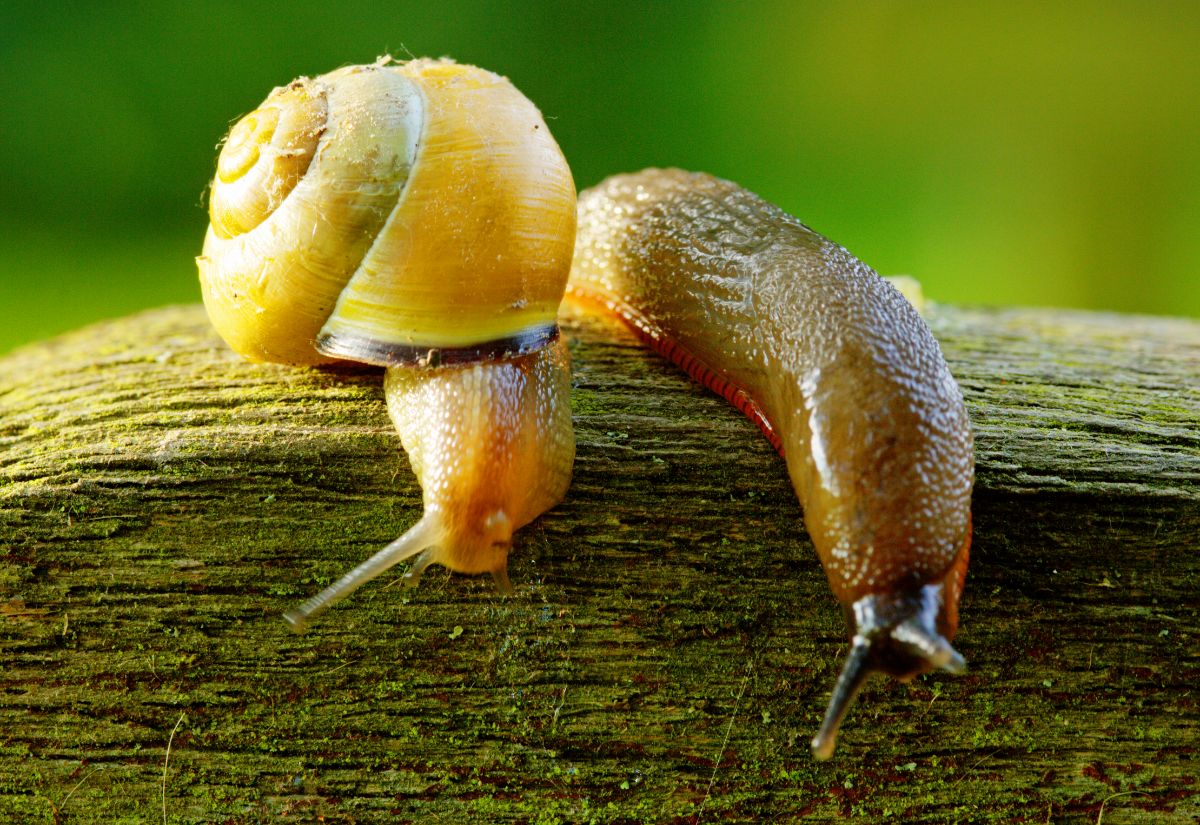
When talking about garden pest control, slugs and snails are often lumped in with other pest insects, like thrips and cabbage loopers; however, slugs and snails are actually not insects at all, but are categorized as mollusks. Yes, you heard that right: slugs and snails are more closely related to octopi and clams than ants and spiders!
Snails and slugs are classified as gastropods, a word that breaks down into two root words, with gastro- meaning “stomach” and -pod meaning “foot,” referring to the basic biological structures evident in these land-dwelling mollusks.
Found on almost every continent, there are thousands of different species of slugs and snails. Known to be munching machines, most species of land slugs and snails will happily travel over 40’ for a meal and can eat several times their body weight every day. That amounts to a lot of garden damage in a short amount of time if you have an unchecked slug population in your backyard!
Throughout their lifetime, a single slug can lay hundreds of eggs, but a typical clutch of eggs usually consists of about 30 individual eggs, which take about two to four weeks to hatch. That means that, in a single growing season, slugs can produce multiple generations of baby slugs that can spell disaster for your garden. Though eggs can be laid anywhere in your garden space, clutches are most often found in moist areas, such as under rocks and layers of mulch, where they can lay dormant for long stretches of time until environmental conditions are just right.
Finally, although they may look different, slugs and snails are actually very similar, except for the fact that snails carry a hard shell that they use for moisture retention and protection. Slugs, on the other hand, don’t have shells but rather a small, soft, saddle-like patch on their back, which is called a “mantle.” Because slugs don’t have shells, they are more prone to desiccation and predator attack so are more likely to explore garden spaces in rainy weather or after dark.
Signs of slug and snail damage

Slugs and snails are not exactly small garden pests, so the most obvious sign that you are dealing with an infestation is that you’ll find a slug or two dutifully gnawing on your fresh produce. If, however, you can’t find any slugs after a close inspection, that doesn’t mean your garden is slug-free. Slugs and snails are notoriously good at hiding in small cracks and crevices and under leaf litter, so there are a few other telltale signs that you may have slugs in your yard to look out for:
- Missing seedlings. Slugs and snails love soft, leafy vegetation and tender seedlings make one of their favorite meals. If you come out to your garden one morning and find all of your newly planted seedlings are damaged or, worse, completely missing, there’s a good chance some hungry slugs have been at work.
- Leaf damage. Leaf damage caused by slugs can vary, but most of the time it will look like ragged, chewed leaf margins or large ragged holes in the center of leaves. If you have a particularly bad slug problem, don’t be surprised if you find leaves chewed down to nubs or completely skeletonized so that only the large central ribs of the leaves remain.
- Holey fruit. While slugs and snails love tender leaves, they certainly don’t limit themselves to kale and lettuce only. Large, round holes bored into fruit, like strawberries and tomatoes, are often the result of slug and snail feeding too.
- Shiny trails. Slugs and snails secret a shiny slime from their bodies, which helps them to move and find mates. If you find shiny trails of slime dotting your garden or crisscrossing your lettuce patch, it’s a sure sign you’re dealing with some pesky slugs.
- Nighttime damage. Because of their soft skin that is prone to drying out in the heat, slugs are mostly active at night or after it rains. For this reason, any plant damage that occurs overnight is very likely to be the product of foraging slugs.
Slugs and snails will attack most garden produce, but they are particularly inclined towards brassicas, which include broccoli, kale and cabbage. Other particularly vulnerable plants are fruiting plants, like tomatoes and strawberries, lettuce, hostas, cleome, ageratum, lilies and violets.
The problem with traditional slug control methods
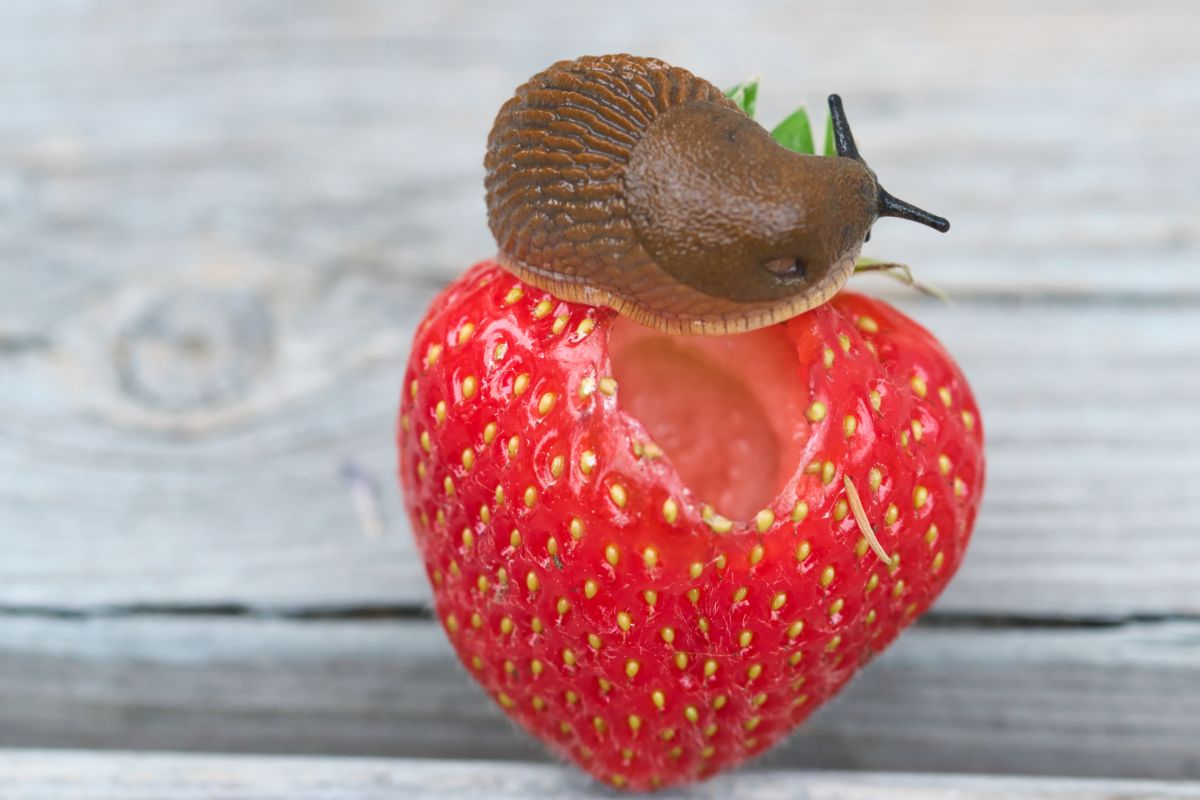
Until recently, the most popular form of slug and snail control was slug pellets, also known as slug bait. Consisting of metaldehyde, a pesticide that has now been banned in many countries, these pellets were very effective at controlling slugs and snails, but they had a deleterious effect on larger animals too. Though the pellets themselves were not appealing to creatures like amphibians, birds and mammals, any animal that naturally preyed on slugs and snails was at risk of accidentally ingesting this powerful pesticide.
Study after study showed the negative effects metaldehyde had on birds, amphibians, hedgehogs and other animals that consumed slugs and snails. Effects ranged from lower birth rates to death, but the conclusion was unavoidable: metaldehyde affected the entire food chain and caused population declines in the various species that fed on slugs.
For this reason, even if metaldehyde pellets are not banned in your area, they are best avoided in your garden and yard for the health and safety of birds and other animals that may visit your space. There are so many other effective methods of slug control that there is no need to resort to metaldehyde or another synthetic pesticide to keep slugs in check.
In recent years, various products purporting to be organic and safe slug pellets have cropped up on the market too. A quick glance at the ingredient list will usually show that these products contain “iron phosphate" as their active ingredient. Indeed, while these products are organic, they still can be problematic and should be avoided, particularly in organic gardens.
The issue with using iron phosphate is that recent studies have found that products containing this ingredient can have negative effects on resident earthworm populations, including population decline, increased mortality rates and slowed growth.
Earthworms are essential parts of any garden; however, they can be particularly important in organic gardens where their rich worm castings, also known as earthworm poop, can improve soil fertility and drainage. Even though iron phosphate is safer to use around animals like birds and amphibians, earthworms are crucial parts of the soil network, and any product that negatively impacts them is best avoided.
A note on salt and vinegar

Table salt or distilled vinegar are frequently used to kill slugs, and they are effective. Both salt and vinegar work by reacting with the slime that slugs and snails naturally produce, causing rapid dehydration and death. A certainly unpleasant end for these land-dwelling mollusks, salt and vinegar are organic control methods and so are preferable to synthetic pesticides, but they do come with a caveat.
Both salt and vinegar can be used as organic, generalized herbicides, meaning they will damage or kill plants they come in contact with. Moreover, large quantities of salt or vinegar can affect soil fertility for months and years to come. Vinegar, specifically, can change soil pH, while salt can increase soil salinity, making it difficult for plant roots to absorb moisture.
If you choose to tackle your garden slug problem with either of these kitchen staples, be sure to use them as spot treatments only and avoid dousing soil with excessive quantities of either. Additionally, keep all salt and vinegar away from plant leaves and roots to avoid leaf burn and plant death.
Organic control methods to use in your garden
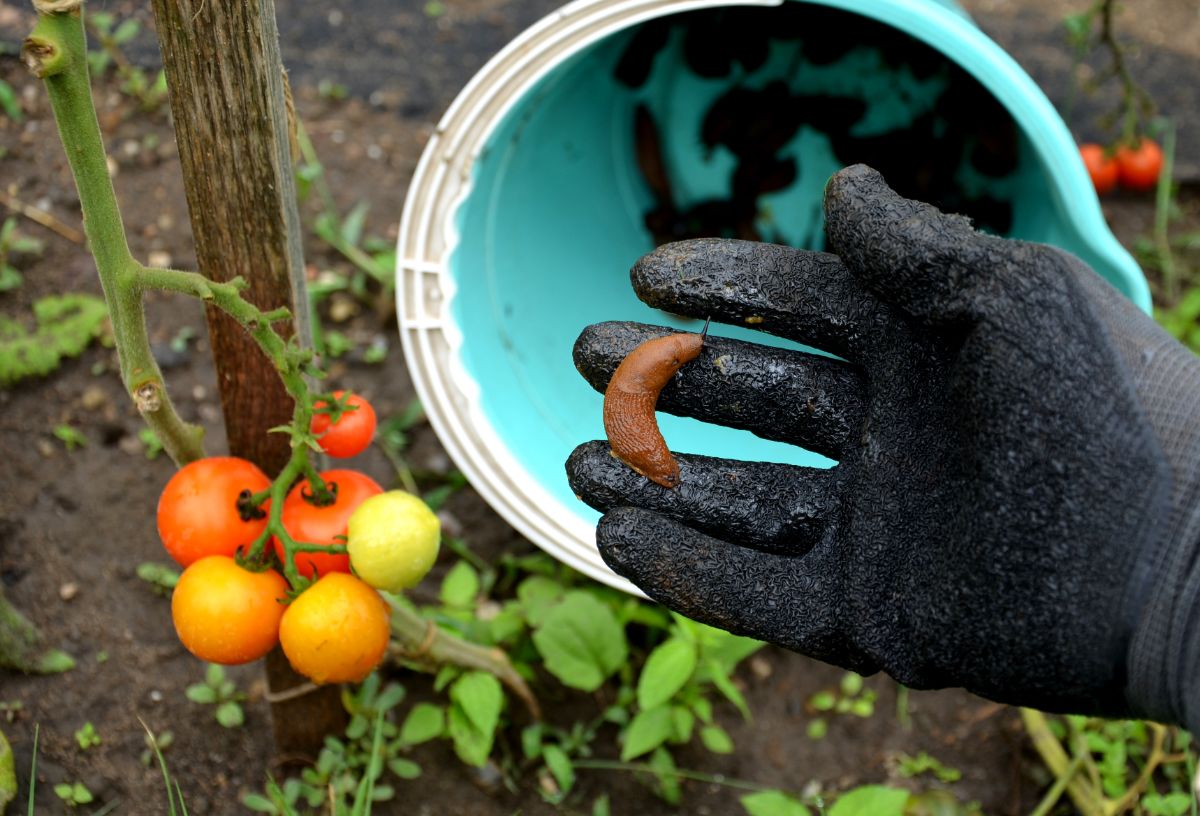
Years ago synthetic pesticides were one of the few methods gardeners had at their disposal for controlling common pests like snails. Today, however, we have a better understanding of slug biology and behavior and can use that knowledge to naturally and effectively control slugs using safe, organic methods.
Handpicking
If you’re dealing with a small population of slugs, handpicking is often the simplest and quickest solution. However, if you don’t like creepy crawlies, this method might not be the best option for you.
To avoid getting snared by any slime, be sure to wear garden gloves while handpicking and bring along a bucket of soapy water to dump any slugs and snails you find in. Simpler and less messy than squashing slugs, soapy water is a quick method of dispatching any slugs you find.
Alternately, if you happen to have a backyard flock of chickens or ducks, try offering any slugs or snails you find to your feathered friends. Ducks, in particular, are some of nature’s most efficient slug eaters and they will certainly appreciate the treat!
If you opt to use handpicking as your primary method of slug control, you’ll need to stick to it and check your garden daily for any new offenders. Because they don’t like heat, you’ll often have the best luck hunting slugs after a rainstorm or in the evening after the sun sets.
Slug pubs
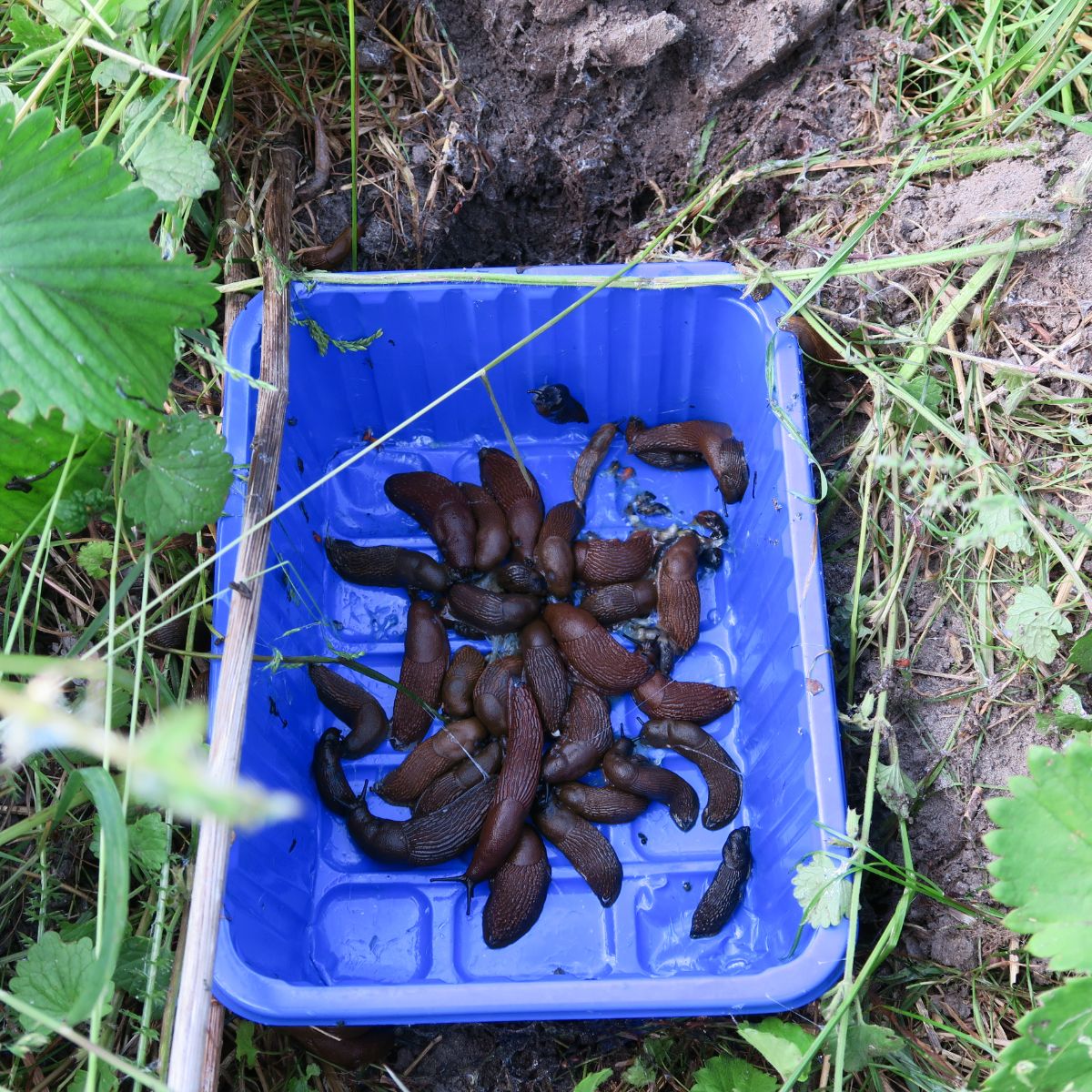
A traditional method of slug control that works well even today are “slug pubs.” Using any old jar, plastic cup or glass bottle you have laying around, create your own pub by simply filling your vessel of choice with a bit of cheap beer or old orange juice. Place your pub outside in your garden bed and slugs and snails will be drawn to the odor, climb in and drown.
An incredibly simple, but effective means of physically controlling problematic slug populations, try placing a number of “pubs” around your garden beds or near specimen plants you’d like to protect specifically. For most garden spaces, a combination of handpicking and slug pubs is usually all you need to protect your plants from these hungry little crawlers.
As slug pubs can get quite messy quickly if you have a lot of slugs in your area, be sure to check your pubs daily, cleaning out and refilling pubs as needed.
Premade slug traps
While homemade slug pubs are easy and cheap to make, if you don’t want to look at old beer bottles and Solo cups scattered around your garden, you can also purchase premade pubs for a tidier garden look. Slug traps such as the Huhebne snail cages and the snail boxes by Beslands come in packages of five and are made of green plastic that should blend in nicely with your garden foliage. Functioning the same way as homemade pubs, simply bury your premade traps slightly in the soil, fill them with old beer or orange juice and slugs will be drawn to the sweet, fermented odor.
Simple, DIY slug traps
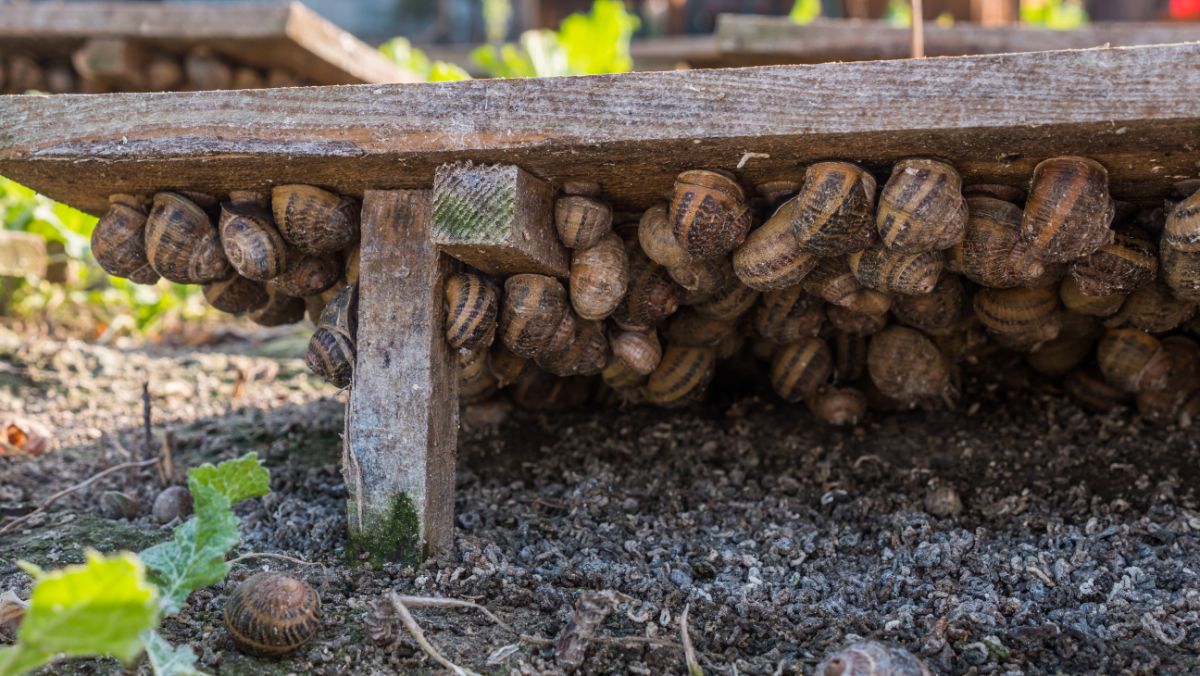
Another low-tech solution, simple slug traps can be made out of almost any scrap material you have laying around your home, such as old tiles, scraps of wood, bricks, stones or even old melon rinds.
To make your trap, select your object or objects of choice, such as bricks, and place them on the soil throughout your garden beds. During the heat of the day, slugs and snails will congregate under these simple traps, hiding in their moist shadows. Using their natural habits to your advantage, simply check your traps once a day and you’re sure to find slugs and snails hiding beneath them, making collecting your garden foes for easy disposal a breeze.
Diatomaceous earth
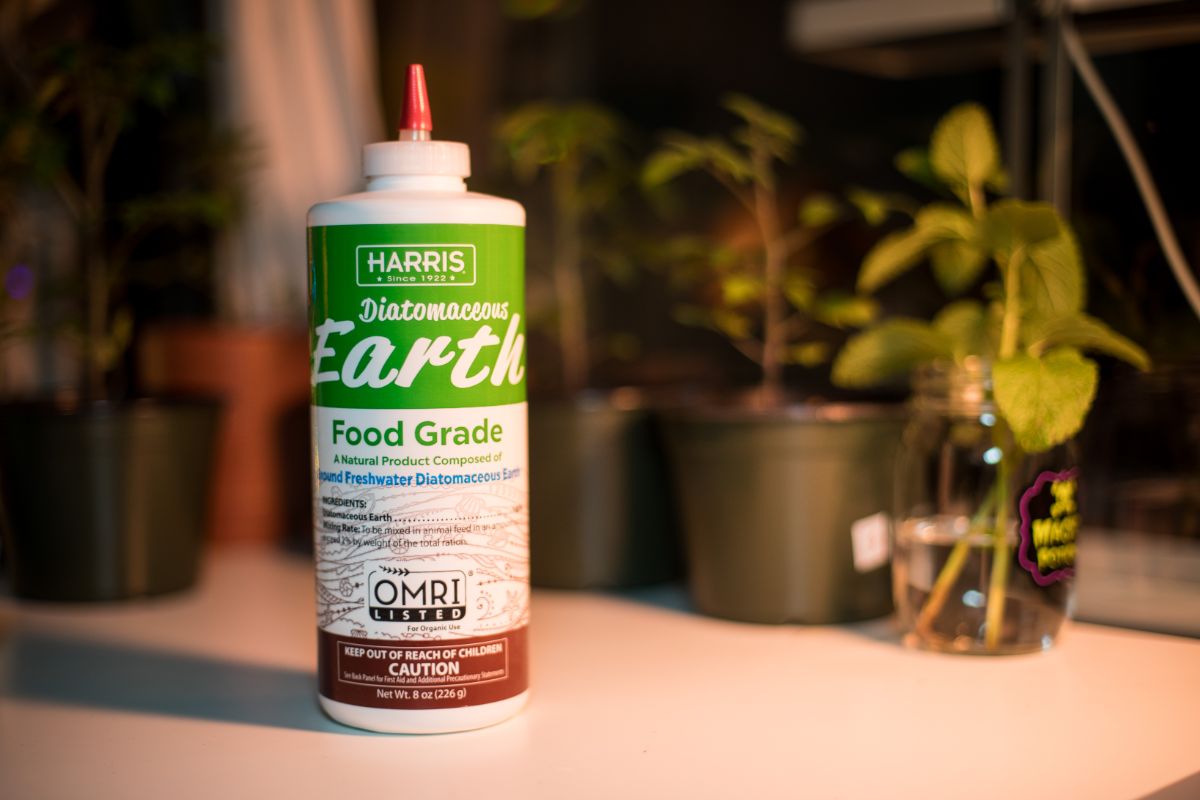
Diatomaceous earth (DE) is a fine white powder that is made from the fossilized skeletons of tiny marine organisms known as diatoms. These tiny fossils have surprisingly sharp edges that can rapidly shred the soft tissue and harder exoskeletons of any insects and other garden pests that come in contact with them, including slugs and snails.
Generally safe for use around pets and humans, diatomaceous earth can cause lung irritation, so protective masks should be worn during application. Additionally, because diatomaceous earth is categorized as a “generalized” pesticide, it can harm beneficial insects and pollinators if improperly applied. For this reason, never apply DE on plants in flower and use it as a spot treatment, rather than a preventative, to address slug and snail invasions.
As a powder, DE can be sprinkled on plant vegetation, such as cabbage heads and lettuce plants, or it can be used as barrier by encircling target plants with a fine layer of DE at the root line. When slugs and snails crawl towards the plant, they will inadvertently come in contact with DE and recoil. Because DE works only when dry, be sure to reapply it after heavy rains or after a period of particularly high humidity.
While DE is often an effective treatment for slugs, some gardeners report better success with it than others. There is some evidence that DE works primarily as a repellent, rather than a pesticide, for slugs and snails, causing discomfort to slugs’ soft tissue which makes them avoid treated plants, but doesn’t kill the offending slugs.
Other barrier powders
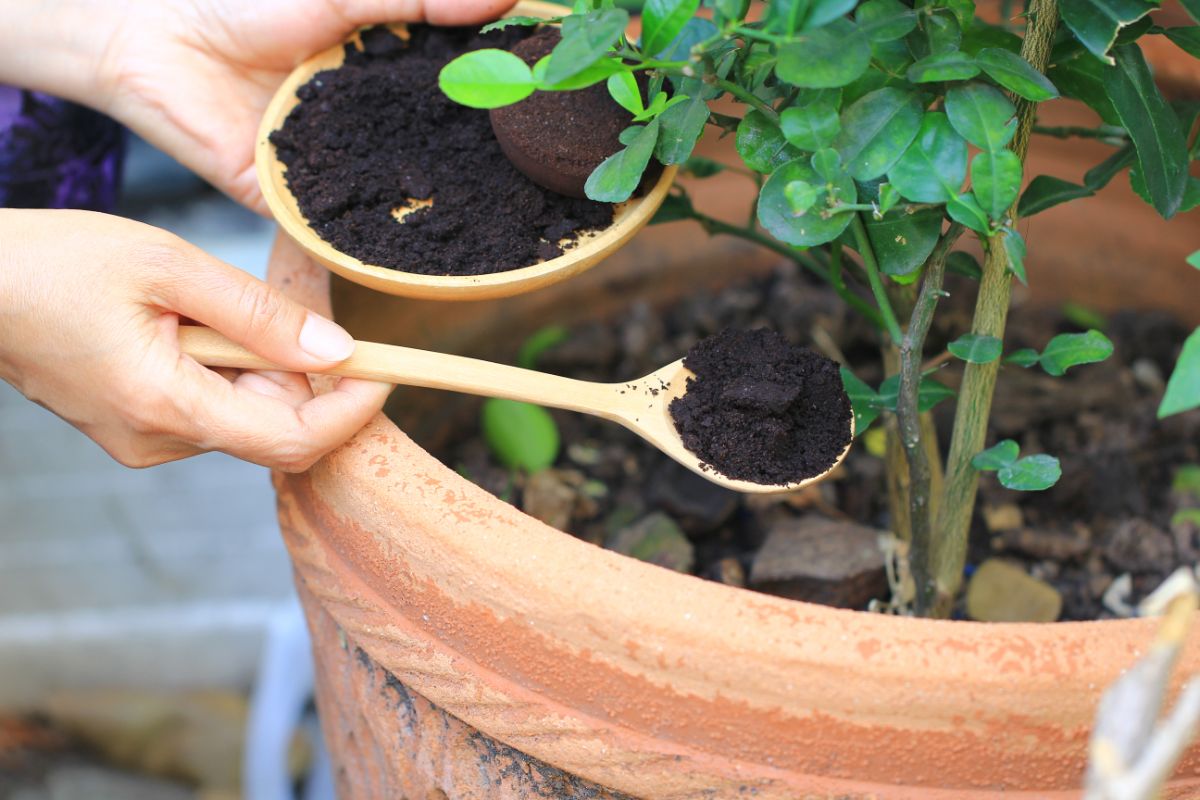
Coffee grounds, crushed eggshells, wood ash and crushed seashells have all been reported to have the ability to repel slugs; however, like DE, some gardeners report better success than others when using these products. Because all four are organic and won’t harm pollinators or other creatures, there is no harm in trying them out in your space and seeing how useful they are against your resident snails.
To use, simply surround individual plants or the exterior of entire beds with any of the products above or a mixture of all four if you choose. The abrasive texture of these products can be unpleasant for slugs and snails to crawl across, causing them to look elsewhere for an easier meal. Wood ash, in particular, has shown significant utility for pest control; however, it works best against young slugs, certain slug species and snails, while some slugs seem able to crawl right over it without damage.
Because these products are not 100% effective, it is often advised to create wide swathes of these powders around your plants, as wider borders require snails and slugs to have longer contact with these products. The longer snails and slugs have to touch powdered eggshells, for example, the more likely they will find the resulting discomfort not worth the trouble.
A note on coffee grounds: While gardeners have long recommended coffee grounds as a useful remedy for slug infestations, it’s taken awhile for science to discover why. Recent studies have shown that it is actually not the texture of the grounds themselves that snails and slugs find repellent, but rather the caffeine those grounds contain.
In a recent study, a 1 to 2% solution of caffeine was found to cause death in nearly 100% of the slugs and snails it was tested on. Surprisingly, caffeine used in this way caused a higher mortality rate in slugs than traditional pesticides, like metaldehyde! In the same study, however, used coffee grounds were found to be far less effective. This is because the caffeine content is reduced when coffee is brewed, making grounds less likely to contain enough caffeine to cause serious harm to slugs and snails. With that in mind, if you want to use coffee grounds in your garden for pest control, try to get grounds that are as fresh as possible which will pack a greater punch.
If you’re looking for large quantities of coffee grounds, try contacting your local coffee shop to see if they have any to spare. Often, local shops are more than happy to share their spent grounds with you and, if you end up with more than you need for slug control, just chuck the excess in your compost bin for some future, nutrient-rich compost.
Electric barriers
For years, gardeners have used electric fences to keep larger pests, such as deer, away from coveted produce, but did you know electric fences can be used to deter slugs too?
It may sound silly, but if you have a container or raised bed garden, you can actually create your own electric slug fence using a battery and some electric or copper wire or tape that will repel slugs with a small shock. If DIY isn’t your cup of tea, there are also premade options available online as well.
Copper tape
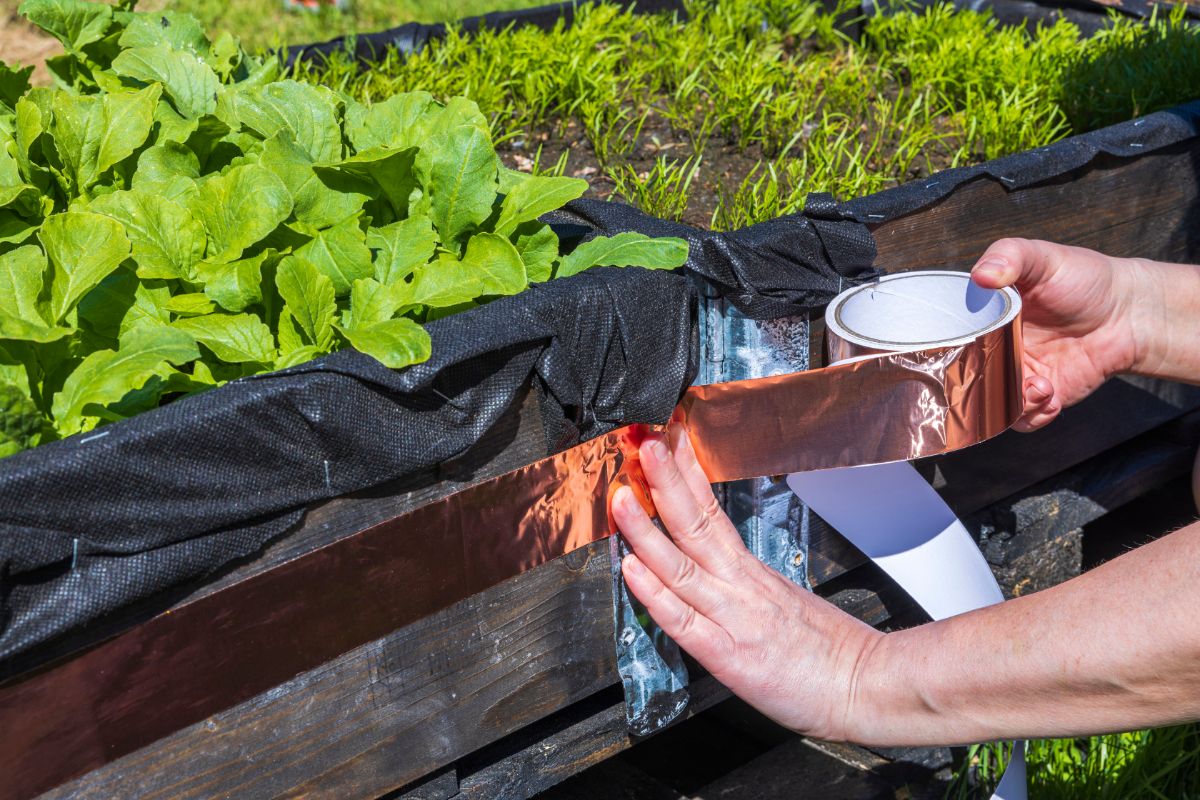
For a lower tech option, try attaching copper tape to the exterior of your raised beds or plant pots. When slugs and snails crawl across the copper, their slime reacts with it, giving them a nasty, though non-fatal, shock that will send them crawling in the opposite direction.
Although many gardeners swear by this method, other gardeners have had less satisfying results so it is up to you if you want to try it out. If you do, consider pairing your copper tape with another slug control method to boost its effectiveness. Also, keep in mind that as copper tape functions as a barrier, slugs can easily circumvent it by using any plant leaves cascading beyond your garden beds as a bridge, so be sure to keep your plants well-pruned.
Nematodes
Nematodes are tiny, microscopic worms that can be harnessed in your garden for natural pest control of many problematic species, including snails and slugs. Nematodes work by parasitizing various insects and can kill target species within six to ten days of application.
While you can naturally attract nematodes to your garden with companion planting, you can also simply order them online and have them shipped right to your door. Just follow the manufacturer’s instructions to apply and you’ll be well on your way to controlling your local slug population naturally and organically.
Wheat or corn bran
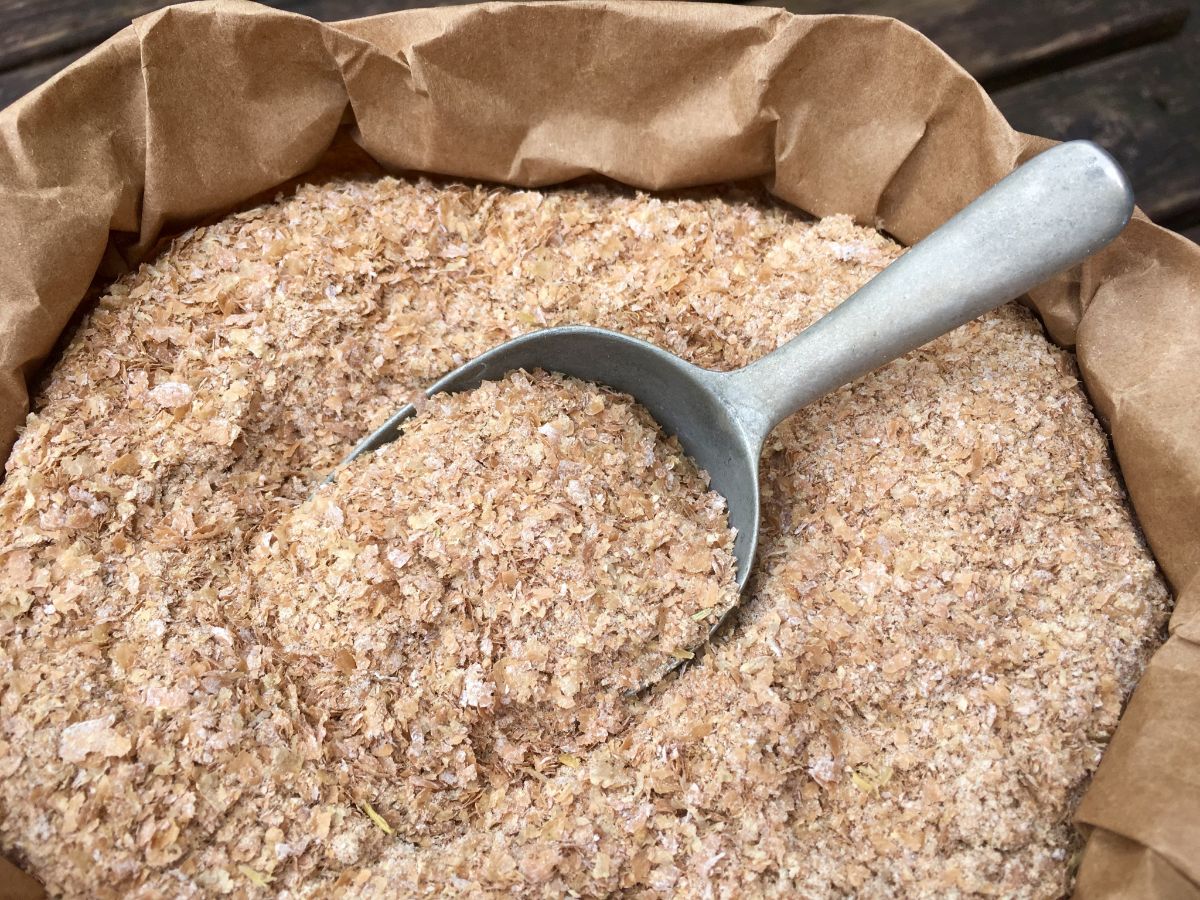
For a simple and low-cost slug treatment, try applying some wheat or corn bran around your garden or encircling plants slugs munch on with this all natural, edible product.
In the garden, wheat and corn bran work as desiccants. When ingested by slugs and snails, these brans dry your garden pests up from the inside out. While they function similarly to salt, which is also a desiccant, the beauty of bran is that it won’t accidentally harm your crops or cause issues with soil fertility.
Like other powders, wheat or corn bran should be regularly reapplied throughout the growing season, particularly after heavy rains or periods of high humidity. Inexpensive and generally easy to find, you can often locate bran in bulk at feed stores or bulk food co-ops.
Trap crops
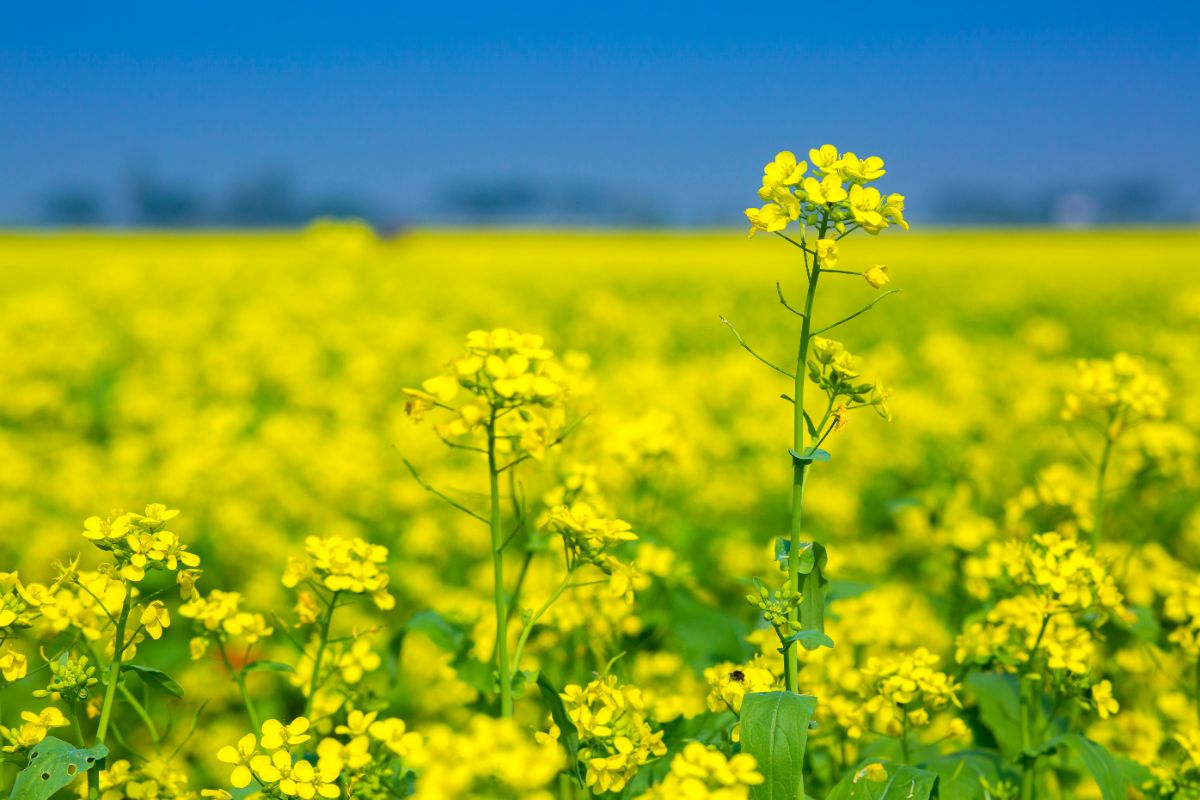
Trap crops are inexpensive crops that you can plant in your garden or in a dedicated backyard space to lure problematic pests away from more valuable crops. A good trap crop should be planted near enough to your garden to draw the attention of slugs and snails, but far enough away from your beds to ensure pests won’t be able to easily crawl back to the plants you want to protect.
When choosing trap crops to entice slugs and snails, look for plants with soft, tender leaves. Brassicas, one of slugs’ preferred snacks, are a great choice, with mustard greens, kale or old cabbage or broccoli seeds being some of the best trap crops around. Other good trap crop options include:
- Roman chamomile, aka lawn chamomile
- Chervil
- Basil
- Comfrey
- Red clover
Companion planting
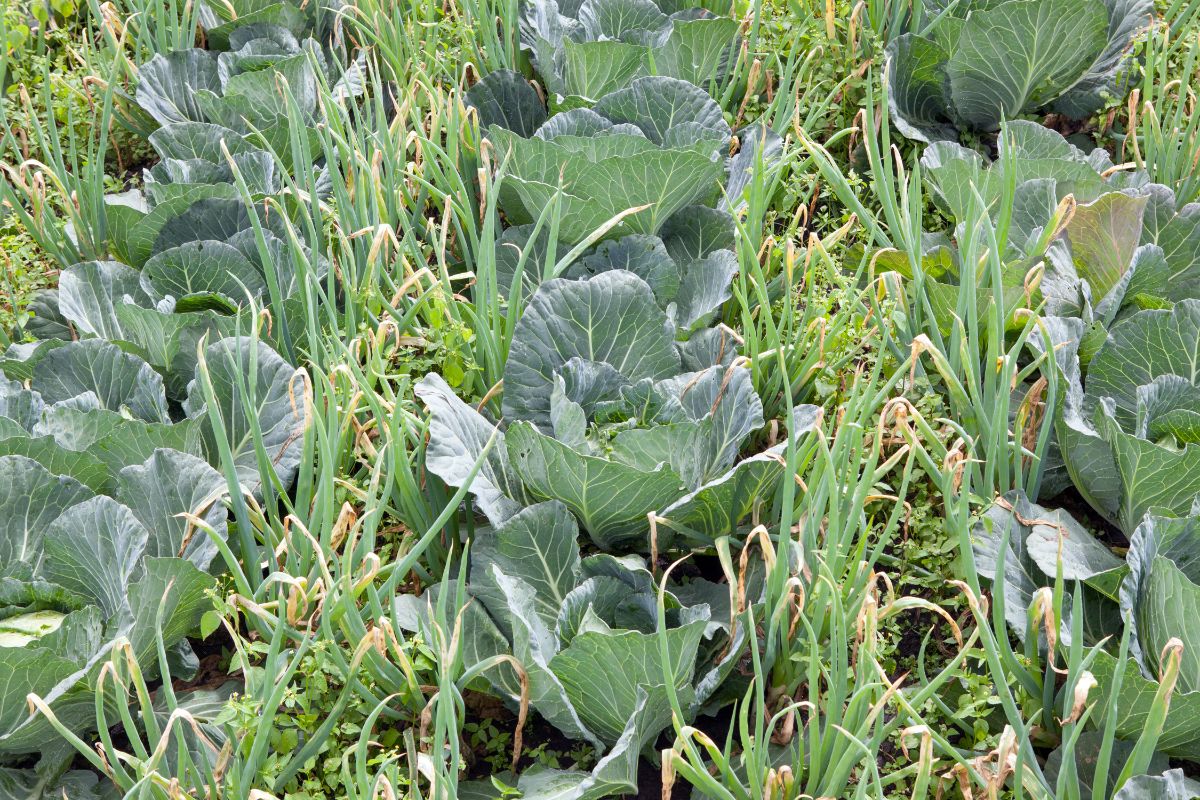
Similar to trap crops, companion planting is a gardening technique in which certain plants are interplanted with other plants to improve growth rate, offer natural protection against pest or to provide other benefits.
When it comes to companion planting for natural slug control, choose plants that slugs hate and plant them around more desirable plants, like kale and collard greens. Slugs and snails generally avoid strong smelling herbs and plants with furry leaves, while other great companion plant choices include:
- All members of the allium family, including chives, onions, leeks and garlic.
- Anise
- Note: If you choose to grow fennel, keep in mind that it does not pair well with any other plant species and can suppress the growth rate of any plants located nearby. This helps fennel outcompete neighboring plants but, when used as a companion plant, be sure to always plant fennel in its own dedicated pot and just place the pot near plants you’d like to protect.
- Wormwood
- Lavender
- Rosemary
Herbal sprays
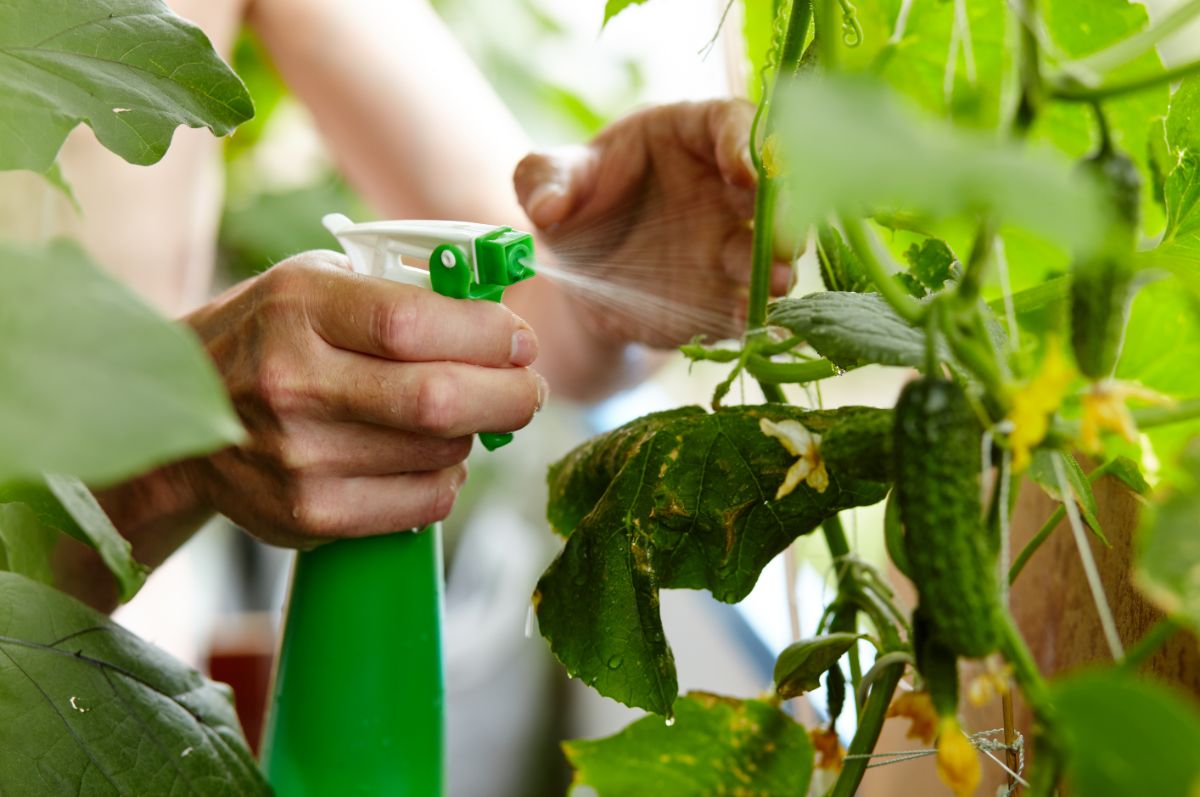
There are many great organic sprays on the market today that use the power of herbs to naturally repel garden pests, including slugs and snails.
Dr. Earth’s Final Stop Snail and Slug Killer is one great option that utilizes the power of herbs, such as rosemary, thyme and peppermint, to stop slugs in their tracks. A similar formulation, offered by Monterey is another good choice and should offer near-immediate relief if you’re struggling with gastropods running amok in your garden.
Practicing good garden maintenance
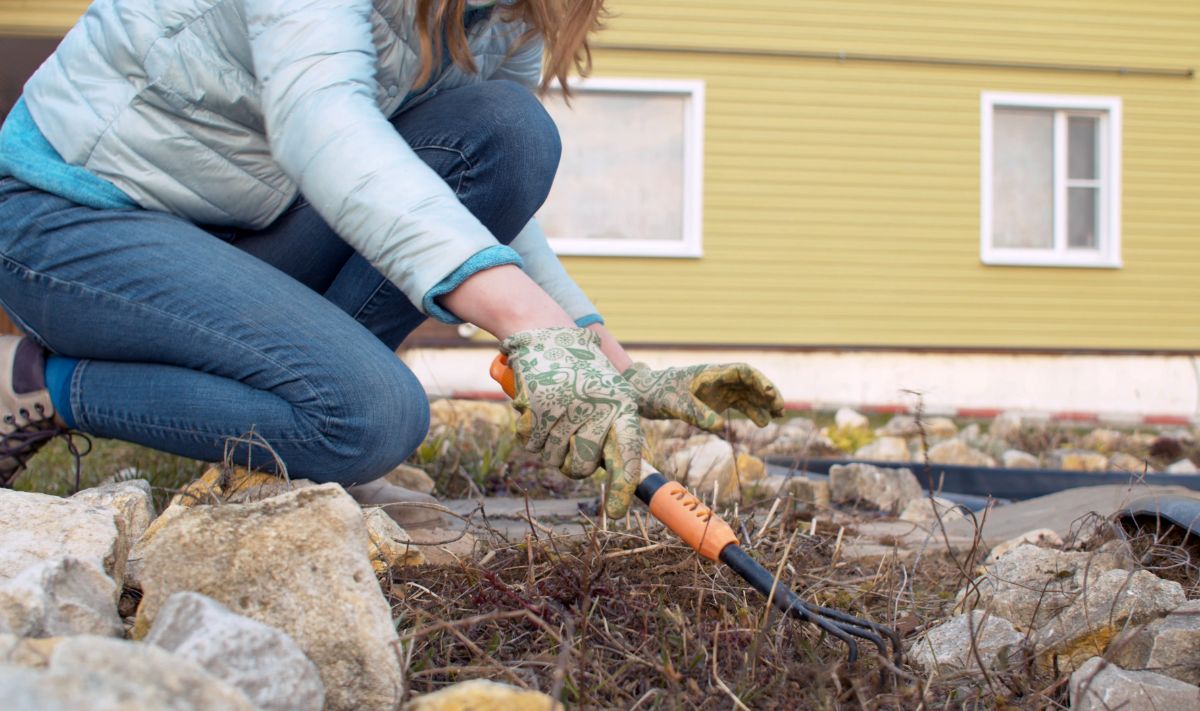
While the above techniques and products are all great solutions for existing slug and snail infestations, for healthier gardens it’s always best to try to prevent problems before they arise. To this end, practicing good, regular garden maintenance throughout the year and keeping your yard clean are some of the best ways to ensure that slugs and snails never even become a problem in your space.
Although there are many excellent tricks to maintaining your garden that are beyond the scope of this article, some essential gardening practices for keeping snails and slugs from taking over are listed below. Try including as many of these methods in your garden as you can for greatest effect.
Choosing the right mulch
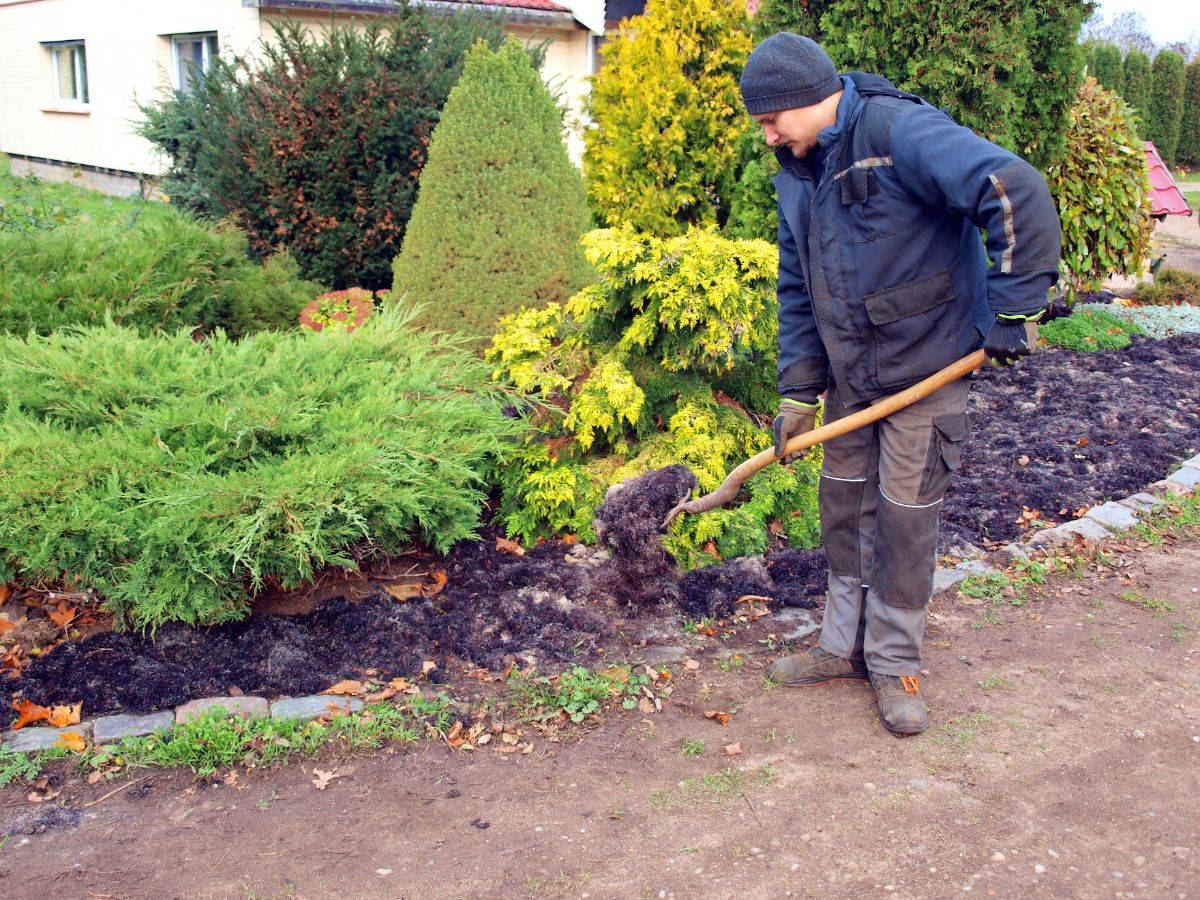
During the heat of the day, slugs will often burrow in moist, loose material to hide from the sun and conserve moisture. Unfortunately, certain loose mulches, such as hay, straw and wood mulch, can provide the ideal environment for slugs to hide in and, eventually, lay their eggs in.
To make your garden less hospitable to slugs, choose more compact mulches instead, such as compost or composted leaf mold, as these mulches have fewer air pockets for slugs to hide in.
Another great mulch option that has the added benefit of protecting plants from slug predation is seaweed. Seaweed is naturally rich in many of the vital nutrients plants need, but it is also coated in salt which will naturally repel foraging slugs.
If you live near a beach, consider gathering some seaweed to add to your garden. Just be sure you harvest from a clean area where pollution is not present and be careful to follow any local or state guidelines as you harvest.
To apply, mulch your garden with 3 to 4” of seaweed and make sure to keep your mulch away from plant stems to discourage rot.
Water correctly
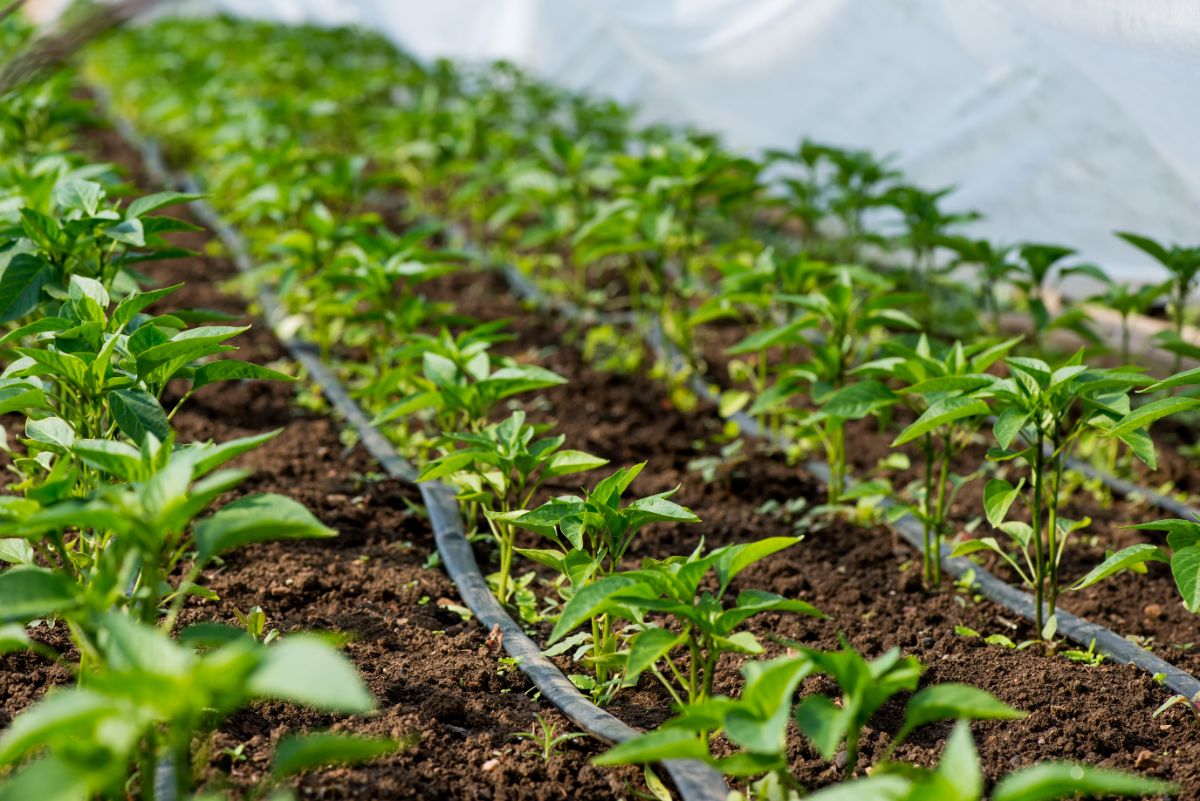
Whether you’re trying to control slugs or not, it’s a well-known fact that most plants do best with morning watering. Morning watering not only ensures your plants have enough moisture to get them through the scorching hot afternoons, but it also gives your plants enough time to absorb water before evening to reduce the chances of moist leaves developing mildew issues.
Morning watering can also help you combat slug and snail issues, as it ensures your beds will be drier by evening. As slugs are primarily active at night, drier beds will be far less appealing to them.
Beyond morning watering, adding a drip line system is another excellent way to reduce slug issues. By directing water straight to plant roots, you keep your plant leaves dry, and that lack of humidity can make all the difference for preventing hungry slugs from making a meal from your foliage.
Grow resistant plants
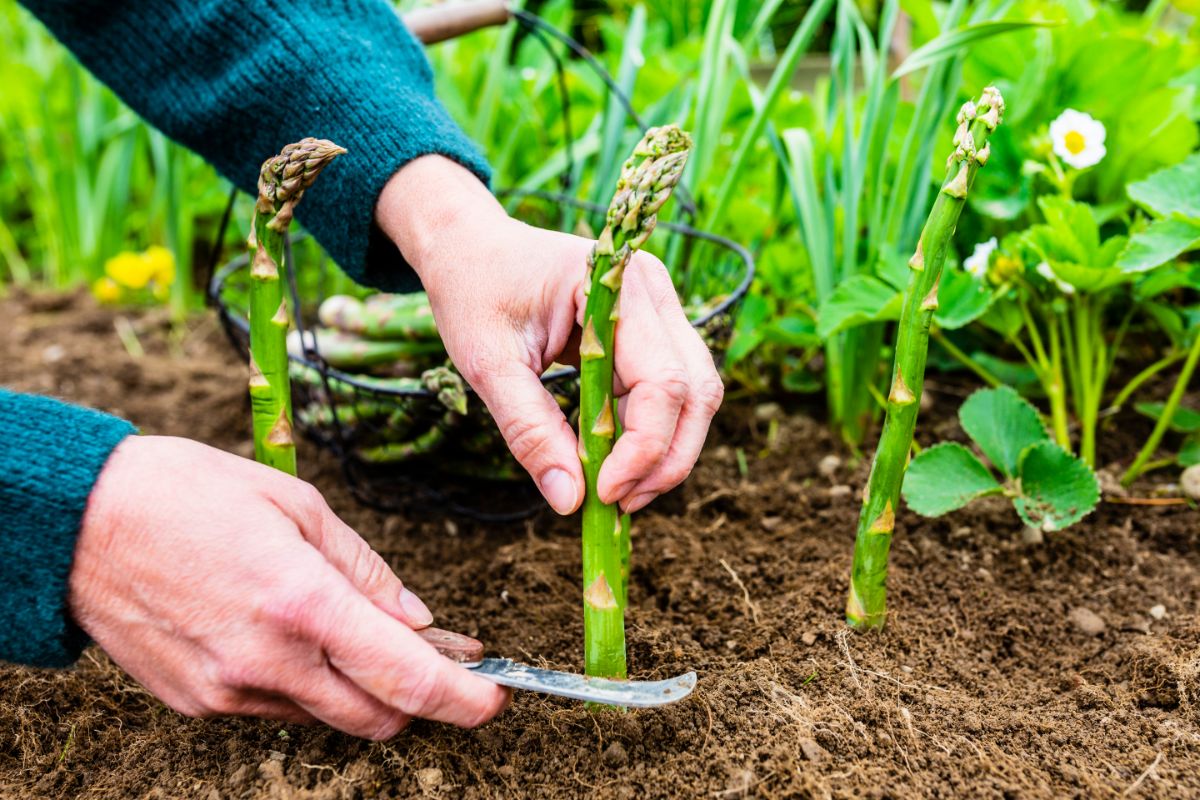
Slugs and snails don’t like most highly fragranced plants and they avoid crops with fuzzy or hairy foliage, which can be helpful to know when choosing what plants to grow.
Beyond this, if you know you have a large population of gastropods in your yard, you can save yourself a lot of headaches by only growing varieties of plants slugs won’t munch on.
For an ornamental garden, some great slug-proof choices include:
- Astilbe
- Phlox
- Poppies
- Hydrangea
- Aster
- Spurge
For vegetable and herb gardens, choose these plants which, under normal conditions, are avoided by slugs and snails:
- Asparagus
- Artichokes
- Endives
- Spinach, certain varieties.
- Cucumbers – young plants are often targeted, but not older plants.
- Melons – as with cucumbers, older plants tend to be avoided, but younger plants are at risk.
- All members of the allium family, including onions, leeks, garlic and chives.
- Aromatic herbs, like rosemary and lavender.
- Potatoes, certain varieties.
Avoid using pesticides
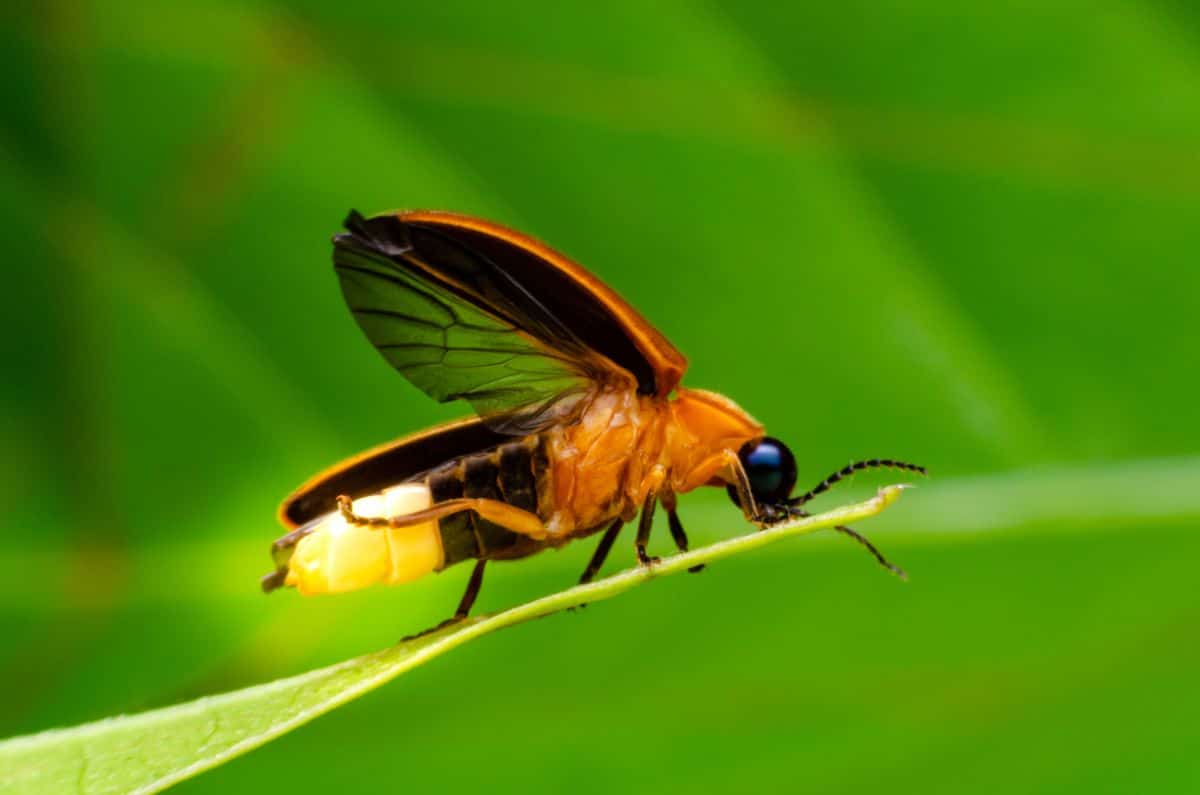
It’s always wise to remember that all life in your garden is interconnected. If you choose to use pesticides to control certain garden pests, you may end up upsetting the natural balance of your yard.
A good example of this can be seen with fireflies. Spraying your yard with synthetic pesticides will affect garden pests, but also beneficial insects. Some insects, such as firefly larvae, are some of the best natural predators around for controlling slugs and snails. However, if synthetic pesticides decrease your native firefly population, you’ll inadvertently be helping out slugs and snails in your yard.
Beyond fireflies, other insects that prey on slugs and snails include:
- Ground beetles and other carnivorous beetles
- Marsh flies
- Centipedes
Attract natural predators

Aside from insect predators, the soft bodies of slugs and snails make them tasty treats for many other larger species as well. Birds, amphibians, reptiles and some mammals, like shrews and hedgehogs, are the natural predators of slugs and snails, so taking certain steps to attract them to your garden can do wonders for controlling pest populations.
To encourage slugs’ natural predators to frequent your yard, try installing bird feeders and a water feature or two, such as a bird bath or saucers filled with pebbles and water scattered throughout your garden beds.
Installing shelters, like toad homes and bird houses, can help too or simply allow old snag trees, or bushes and trees with sheltering leaves to grow.
Planting certain plants that birds love, like sunflowers, amaranth and millet, can attract songbirds and other species to your yard and their keen eyes will help make short work of troublesome snails.
Keep your garden clean
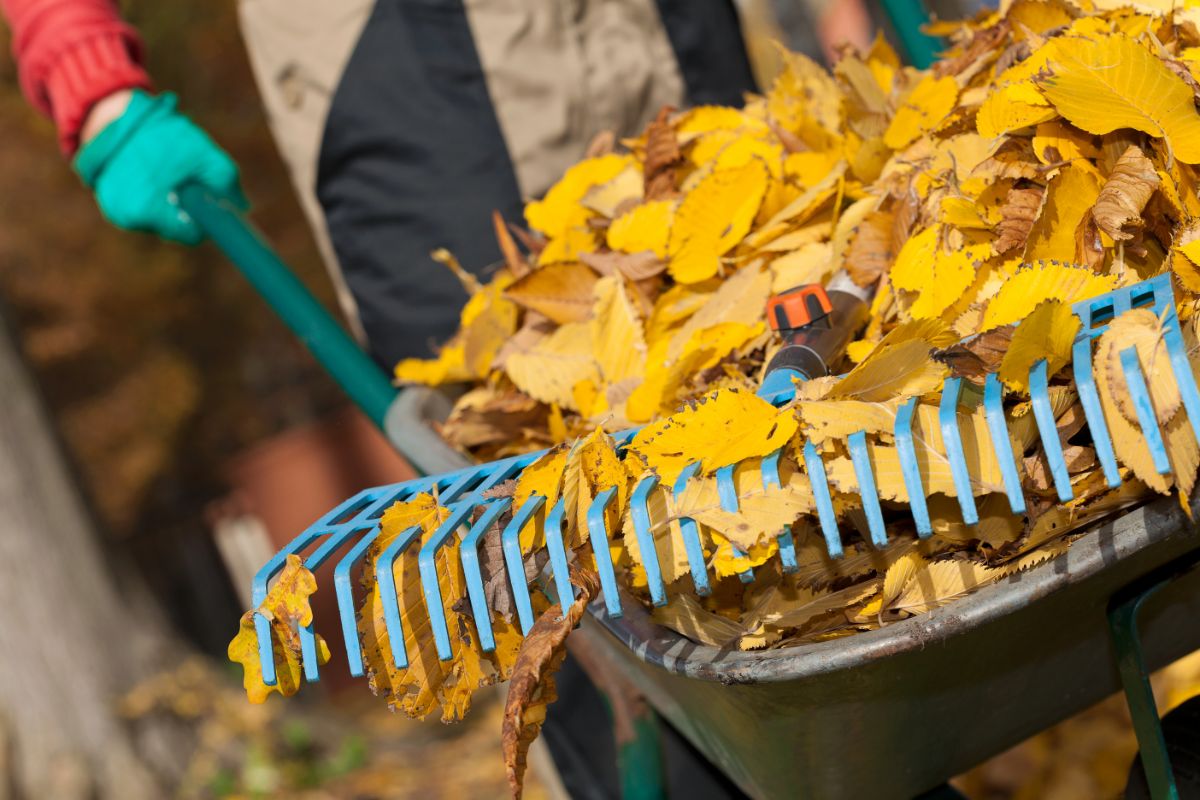
A good fall cleanup of your garden has so many benefits. Your space will look tidier, and you’ll have a leg up on next year’s garden and can get right to plant in spring. But autumn cleanups can also help prevent pests and pathogens, including slugs and snails, from overwintering in your beds and causing a problem next year.
Both adult slugs and snails and their eggs can easily overwinter in loose garden debris and reemerge in spring. To prevent this, be sure to remove old vegetation from your garden beds in fall and properly dispose of it.
If you experienced a slug infestation last year, toss out that old vegetation or burn it to ensure the problem doesn’t reoccur. If you want to compost your old garden debris, be sure to only use hot composting, as it is the only composting method that achieves temperatures warm enough to kill off slugs and their eggs.
Conclusion
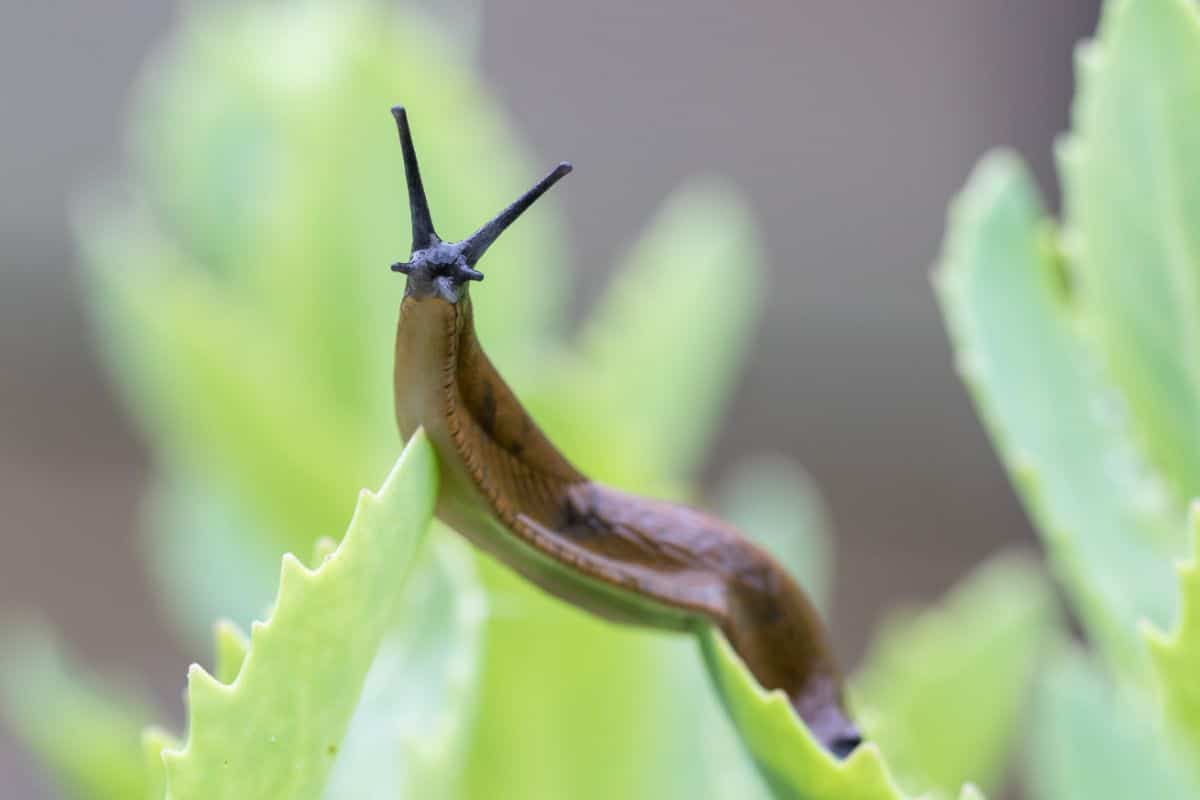
Slugs and snails can be a gardener’s worst nightmare, but they don’t have to be. By understanding the habits, lifecycle, diet and natural predators of slugs and snails, you can effectively develop a pest management strategy that will keep populations under control and that will be perfectly suited to your garden space and your gardening style.
Perhaps barrier methods, like diatomaceous earth or copper tape, sound appealing, or maybe you like the idea of companion planting sunflowers to draw in slug-eating birds. Or perhaps, you’ll opt to combine several different methods, such as using slug pubs, handpicking and seaweed mulch. However, you plan to tackle your slug problem, the important thing is that you stay on top of it and choose organic methods of pest control as often as you can.
Once gardeners may have had limited choices when it came to pest control, but today there are so many natural and organic options that there is no need to resort to chemical pesticides. Even relatively harmless products, like salt and vinegar, aren’t the garden cure-alls we once thought they were either. Often times, the best sort of pest control is the holistic kind: a method that takes into account the normal patterns of the natural world and works with them to find the best solution.
References:
- McIndoe, Andy. “Organic Slug & Snail Control.” Learning with Experts. 9 June 2022. 3 July 2021.
- Shaw, Emma. “Responses of the Earthworm to Iron Phosphate.” ScienceDirect. 9 June 2022. December 2006.
- Walliser, Jessica. “How to Get Rid of Slugs in the Garden. Savvy Gardening.” 9 June 2022. 2018.
- Whitfield, John. “Coffee Breaks Slugs.” Nature. 9 June 2022. 27 June 2022.

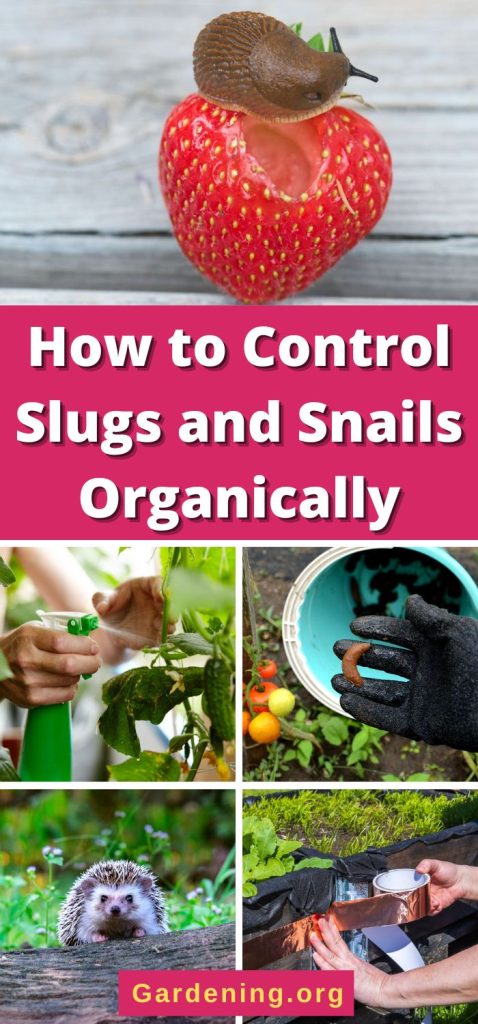
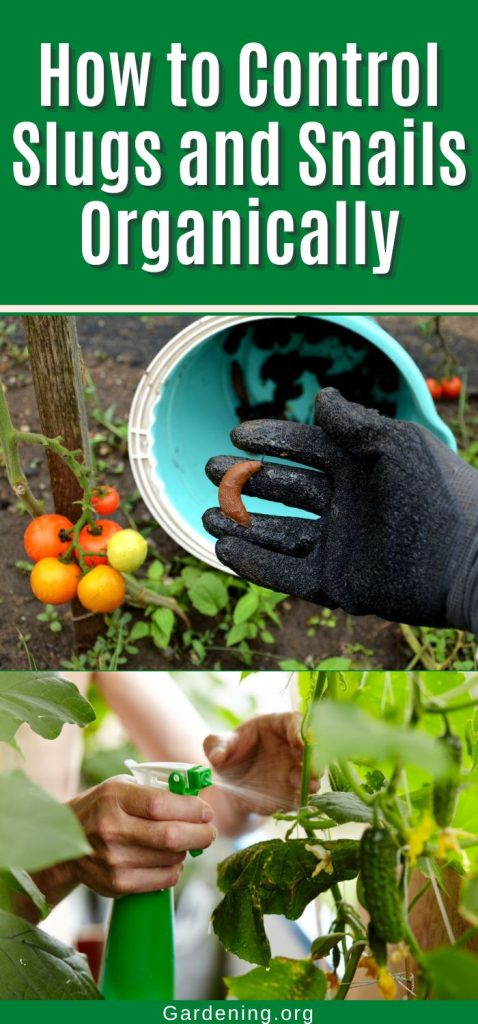

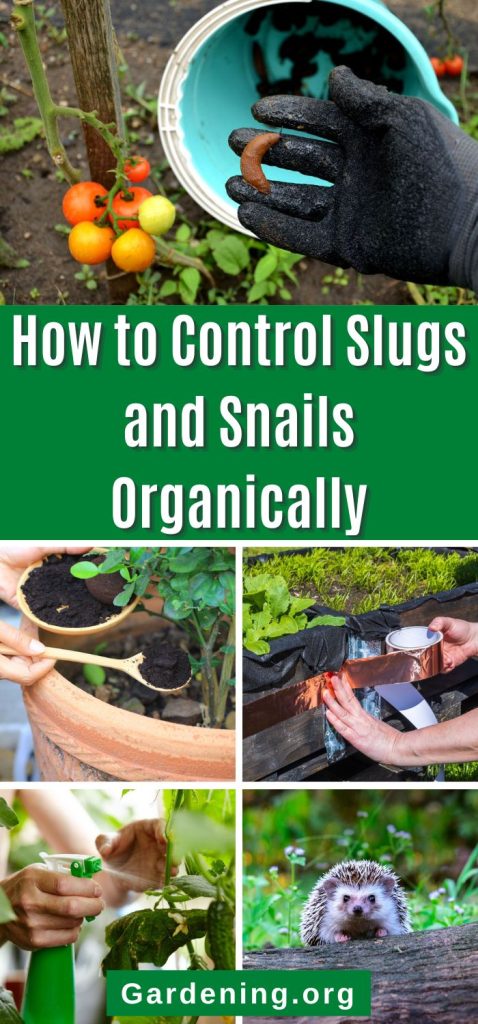

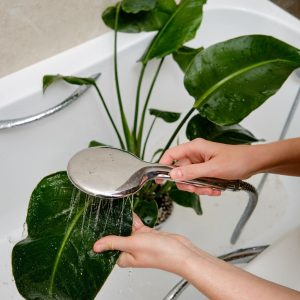

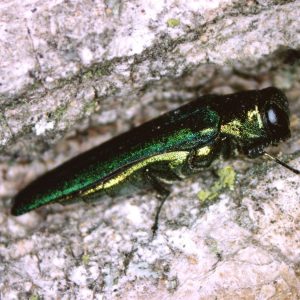
Leave a Reply